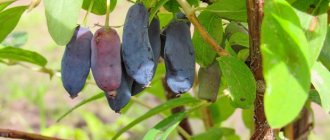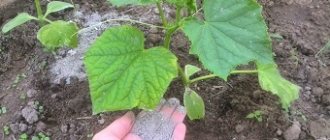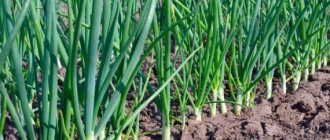Why feed beets?
Beetroot is a hardy and unpretentious crop that does not require much effort from gardeners. But such undemandingness often plays a cruel joke on the owners of the beds - the beets grow, but the quality of its root crops is low.
Beet fertilizers are necessary to form root crops:
- in accordance with varietal sizes;
- sweet and tasty;
- not hard or fibrous.
Lack of fertilizing can lead to beets growing completely inedible.
When growing beets, it is important to apply fertilizers according to the schedule - each growing season has its own set of fertilizers. At the beginning of the growing season, beets need nitrogen, at the end - phosphorus and potassium.
To grow tasty and sweet beets, you need to feed them even on fertile soils. The sweetness and taste of root vegetables is ensured by sodium - the crop is supplied with this element by adding sodium nitrate or table salt to the soil.
How to feed beets
Red beets must be fertilized throughout the growing season. Irregular application of fertilizers or its absence reduces the growth rate of root crops, and they turn out small. In addition, they become tough and not sweet. To feed beets growing in garden plots, you can use fertilizers of both mineral and organic nature.
How to understand what elements beets lack?
Experienced gardeners recognize a lack of nutrients by the appearance of the beets.
Signs of nutritional deficiency:
- Nitrogen. Typically, a shortage of this element is observed at the beginning of the growing season. The main sign of nitrogen deficiency is pale and frail tops.
- Potassium. Observed in the middle of the growing season. The tops acquire a dark red and even purple color. Yellow spots appear on the leaves, they curl and dry out. If fertilizing is not applied in time, necrosis develops on the leaves.
- Phosphorus. Usually observed on light acidic soils that lack organic matter. The leaves become small, the above-ground part turns red, and the tops stop growing. Root vegetables do not form and do not accumulate sugar.
- Magnesium. The lower leaves become light. Yellow spots appear on the tops, and then necrotic lesions appear.
- Sodium. The tops take on a red tint.
- Bor. The core rots. Young leaves do not develop. The growing point dies.
An excess of nutrients can be just as harmful as a lack of them.
Signs of overnutrition:
- Nitrogen. The leaves become dark green, large, juicy. Root crops are stunted.
- Potassium. Growth slows, leaves become light green and covered with brown spots.
- Phosphorus. Chlorosis appears on the leaves. Then tissue necrosis is observed on the tops, it turns yellow and dies.
- Magnesium. The roots die off and the plant does not absorb calcium.
Tips from Ivan Russkikh
Tips from an experienced gardener will help you grow healthy and large beets. To get as much benefit as possible from this vegetable, Ivan advises using beet tops to prepare various dishes, for example, botvinya. It contains all the vitamins and folic acid.
This plant can grow in any soil, but grows best in light soil. Does not like to be fed organic fertilizers and nitrogen. Nitrogen is required only at the very beginning of the growing season.
Potassium supplements should be added as soon as rosettes appear. It is better to add potassium chloride. This supplement contains two types of supplements: potassium and sodium.
Feeding with boric acid will improve the development of roots and tubers. Boron is very beneficial for this vegetable.
Types of fertilizers
All means are good for feeding beets. Along with purchased chemical fertilizers, gardeners actively use natural fertilizers.
Mineral
Mineral fertilizers are a product of the chemical industry. You can buy them at any agricultural store. The advantage of mineral fertilizers is ease of use, concentration of nutrients and high efficiency.
What mineral fertilizers are recommended to feed beets:
- ammonium nitrate;
- urea;
- superphosphate;
- potassium sulfate;
- potassium chloride.
Organic
Beets respond well to organic matter. Organic fertilizers contain the same nutritional elements as commercial chemicals, and in an easily digestible form.
Manure or bird droppings are used to add nitrogen to the soil. Wood ash is a source of other useful substances. By using only these two organic fertilizers, you can grow beets without mineral analogues.
Other popular organic fertilizers are humus, compost, nettle infusion, peat and other natural products.
Complex
Along with simple mineral fertilizers, beets can be fed with complex formulations. Their difference from simple ones is the content of not one, but two or three main elements at once. The most famous complex fertilizers are nitrophoska, ammophoska, nitroammophoska, etc.
To feed beets, complex fertilizers are also used, which contain microelements that are important specifically for this crop. Thanks to a balanced set of elements, you can limit yourself to using one complex fertilizer throughout the entire growing season.
How to recognize fasting
If we talk about what are the best fertilizers for beets, then it is worth considering an important point - any soil may be deficient in one or more elements.
To recognize which ones, soil tests can be carried out regularly. The frequency of checking depends on the stage of beet development, since the plant uses them unevenly.
If this is not possible, then folk tips always come to the rescue:
- 1-2 months after planting the crop and the appearance of sprouts, the root system requires feeding. For its growth, a young plant takes more than 65% of nutrients from the soil. To improve the condition of seedlings, there is a need for nitrogen. Closer to harvest, phosphorus and potassium fertilizers will be required.
- Carbohydrates are needed to improve taste. To do this, stock up on salt and sodium nitrate.
- By looking at the foliage and green parts of the plant, you can always understand which elements are not enough for the full development of beets. If the tops turn yellow - potassium, and if the tops turn red - sodium. The leaves are deformed and there are clear signs of underdevelopment, which means it’s time to add nitrogen. The appearance of the black center of the root crop is an urgent need for boron.
To correct problems, they use both agrochemicals and organic matter. The proportions depend on the stage of crop growth and the strength of the shortage:
| Traditional methods | Chemical fertilizers |
| Green fertilizers (herbal infusion) | Potassium sulfate |
| Nettle liquid | Superphosphate (double and single) |
| Bird droppings or mullein | Ammonium nitrate |
| Compost | Urea |
| Yeast liqueurs (bread) | Potassium chloride or sulfate |
Beets love complex fertilizers. They always contain 2 or more elements that are necessary to improve the quality of the root crop. Among such complexes, ammophoska and nitrophoska are suitable.
Rules and types of fertilizing
Fertilizers, both mineral and organic, can be applied in two ways - at the root and by spraying.
Root
Beets receive most of their nutrition from the soil, so root feeding is the basis for obtaining a good harvest. Root crops should grow not only moderately large, but also tasty, and root feeding helps achieve this.
Features of root dressings:
- During the growing season, at least two feedings are carried out - when thinning the seedlings and before the tops close.
- Fertilizers are applied in the form of nutrient solutions. They are poured into specially made furrows 3-4 cm deep. Furrows are made between the rows. The distance from the furrows to the roots is 5-10 cm.
- After adding nutrient solutions, the beds are watered - this helps prevent burns of the root system.
- It is prohibited to introduce fresh manure or droppings under the beets. They are added only to poor soils, a year before sowing beets.
Foliar
Foliar feeding involves spraying plants and the soil around them. This treatment is carried out as an addition to root feeding - if it is urgently necessary to compensate for the deficiency of one or another element.
Features of foliar feeding:
- are absorbed faster and more completely than root fertilizers;
- can be carried out during any growing season;
- uniform distribution with minimal risks of overdose.
For spraying the following solutions are used:
- Urea. For a bucket of water - 20 g of granular fertilizer.
- Manganese. Use a slightly pink solution. During the season, plants are sprayed 5 times. This treatment allows not only to replenish the manganese deficiency, but also to prevent the beets from being damaged by putrefactive infections.
For foliar feeding, solutions of boric acid and table salt are also used.
Fertilize beets with nettles
Fertilizing can be replaced by watering with a nettle solution. This plant is a storehouse of useful substances: phosphorus, potassium, calcium, magnesium, vitamins, organic acids and many others necessary for the full development of beets. Vitamin K, which is contained in nettles, is actively involved in the process of photosynthesis.
Crops fertilized with nettle infusion are characterized by active growth and rapid ripening of fruits, and good resistance to adverse environmental conditions. The advantage of beneficial substances of organic origin is that they are easily absorbed by plants.
In addition, nettle preparations repel pests. It is most effective to apply fertilizers of plant origin during the phase of active growth and the growth of green mass by the crop.
A nutritious infusion is prepared from nettle. To do this, the green mass is collected before the seeds appear. Only healthy plants are used. Fill two-thirds of the container with nettles, add water and leave for 2 weeks, stirring regularly.
To speed up fermentation, yeast can be added to the infusion. Fermentation accelerates in open sun. Additional addition of other weeds (comfrey, burdock and others) will further increase the concentration of nutrients in the solution. The finished product will darken and stop foaming. The solution is diluted with water in a ratio of 1:10. An infusion diluted 1:20 can be used to spray beets as a foliar feeding once a month.
The culture is watered with infusion once a week at the rate of 0.5 liters for each plant. After which the vegetables are additionally irrigated with clean water. It is best to apply nettle-based fertilizing on a cloudy day, after rain, or combined with regular watering.
Beet feeding scheme
When growing beets, it is extremely important to apply fertilizers at certain stages, and at each of them they use fertilizers of different compositions.
Beets are fed:
- at certain stages of the growing season;
- depending on the condition of the plants;
- during agricultural activities.
Fertilizers for beets are applied at the following stages:
- Preparing the soil for planting. The plot for beets is prepared in autumn and spring. Features of preparing a site for beets:
- Rotted manure is applied in the fall for digging - it should cover the area with a layer of 2 to 5 cm.
- Dolomite flour or crushed shells are added in the fall - 2-3 cups per 1 square meter. m.
- In spring, wood ash is added to the soil - 500 g per 1 square meter. m.
- Sandy soils and sandy loams are fertilized twice - in autumn and spring. For chernozems, fertilizing in the fall is sufficient.
- In heavy soils, an increased dose of potassium is introduced, as well as sawdust, sand and lime.
- When sowing. During this period, fertilizers are applied if they have not been added previously. Fertilizer is sprinkled directly into the furrows. For each square meter put 10 g of nitrate, superphosphate and potassium sulfate.
- During cultivation. Fertilizers are applied according to schedules that are based on calendar dates and growing seasons. Approximate feeding scheme:
- Fertilizers are applied for the first time after thinning the plantings. Take superphosphate, potassium sulfate and carbamide (urea) - 30 g each, dissolve in a bucket of water. This amount is enough for 10 sq. m.
- The second feeding is done after 3 weeks. Apply fertilizer of the same composition as the first time.
- The third is carried out after another 2-3 weeks. Its composition is already slightly different from the previous ones. Take double superphosphate and potassium sulfate - 40 g per bucket. The prepared solution is poured over 10 square meters. m. The beds are watered with this composition to enhance the growth of root crops.
- When growing late varieties of beets, another feeding is often carried out. It must be done 3-4 weeks before harvesting.
Soil nutritional requirements
Beet roots grow successfully on loose soil with neutral acidity. Heavy alumina and chernozem are diluted with part of the sandy soil to make the soil structure lighter. For this purpose, non-acidic peat is also applied to the bed.
The site for planting beets is chosen in the same area where eggplants, peppers, and potatoes were grown. These crops are traditionally planted in soil rich in organic matter, which is amended in the fall. Within a year, manure and humus have time to decompose, leaving substances suitable for table root vegetables. Fresh organic matter, which contains a lot of nitrogen, will not benefit the beets; it will only cause rapid growth of the tops. This is valuable information for beginning gardeners who often ask questions: do beets like manure, can their seeds be planted on humus, and how to feed the beets.
Feeding and fertilizers for beets
Additional Information. The addition of fresh humus and manure causes branching of root crops and reduces the taste properties of beets.
Feeding beets by month
Beets are fed taking into account the growing season. For many gardeners who grow beets in open ground, it is more convenient to navigate by the calendar.
In June
In June, ground beets are at the initial stage of the growing season, when they need nutrition for the growth of green mass and root development.
How to feed beets in June:
- As soon as the second leaf appears on the plant, the beds are watered with mullein diluted in water 1:10. Fertilizer is poured into the furrows between the rows.
- After 2 weeks, the beds are watered with ammonia diluted with water - 1 tbsp. l. for 10 l. Adding an ammonia solution helps repel pests and increases plant immunity.
In July
In mid-summer, beets form a rosette. The fertilizing applied during this period should promote the formation and filling of root crops. For this purpose, the culture is given potassium.
How to feed beets in July:
- Potassium nitrate. Dilute 2 tbsp in 8 liters of water. l. drug.
- Table salt. Dilute 2 tbsp. l. in a bucket of water.
In August
At the end of summer, the development of root crops is completed, they begin to intensively accumulate useful elements and acquire a certain taste. In August, beets are fed with potassium-phosphorus fertilizers.
What fertilizers to apply in August:
- A solution of mineral fertilizers. Superphosphate (2 tbsp) and potassium chloride (1.5-2 tbsp) are diluted in 10 liters of water. Fertilizer must be applied 4 weeks before harvesting.
- Instead of a mineral “cocktail”, many gardeners add more harmless products - for example, wood ash or yeast solution.
Folk remedies
To increase the yield and improve the taste characteristics of table beets, you can use some folk remedies, for example, watering them with ash or salt solution, infusion of nettle or yeast, as well as a weak solution of boric acid.
We recommend reading
Beneficial properties of beets for human health, contraindications
Rules for planting beets with seeds in open ground
Boric acid
Boron has a good effect on the root system of vegetables, which, in turn, promotes better growth of root crops, the accumulation of sugar in them, avoids the formation of a hollow core in them, and increases the shelf life of harvested vegetables. The application of this microelement is especially necessary on sandy loam and sandy soils.
To feed plants with this element, you can use preparations such as Mak-Boron or boric acid. In this case, you need to prepare fertilizer from 10 liters of water and 0.5 tsp. (10 g) boric acid. This volume should be distributed over 5-7 square meters. m beds.
Ash
Feeding beets with ash solves several issues at once - plants take K and P from it, as well as microelements. In addition, it has the ability to deoxidize the soil, which is also beneficial for this vegetable.
You can feed the plants with ash for the first time immediately after planting - dissolve 2 cups of ash powder in a bucket of hot water, leave to steep for 2 hours, and then pour the liquid over the soil in the beds. Ash can be scattered dry over the surface of the rows (1-2 cups per square meter).
Salt
Regular table salt (not iodized) promotes the accumulation of carbohydrates in root vegetables, causing them to become sweet.
Salt is the source of sodium needed by this vegetable. Saline solution is prepared from 1 tbsp. l. salt and 10 liters of warm water. This volume must be distributed over 1 square. m. Feeding is carried out 3 times:
- when young plants form 6 leaves;
- after the root crops rise about 3 cm above the ground;
- 2 weeks after the 2nd feeding.
Not only root, but also foliar (spraying on the leaves) fertilizing with salt is acceptable, especially if the beet leaves become red in color, which indicates a lack of sodium in the soil. In this case, the proportion of the solution will be different - 2 tbsp. l. on a bucket. When using salt, you should adhere to the recommended dosages; increasing the concentration leads to its accumulation in the soil, which not only has a bad effect on the growth of vegetables, but also salinizes the soil.
Yeast
A solution of ordinary baker's yeast added to the soil activates the growth of soil bacteria that process soil organic matter and saturate the soil with nitrogen and potassium. Yeast promotes enhanced root growth and increased disease resistance.
To obtain yeast fertilizer, you can use 2 different recipes:
- Dilute 1 kg of live yeast in 5 liters of liquid, leave for 2 hours, then dissolve in water in a ratio of 1 to 10.
- 10 g dry granules and 2 tbsp. l. dissolve granulated sugar in a bucket of water, leave to infuse for 2 hours, dilute with water 1 to 5.
The yeast solution is used 3 times: in the spring, when shoots appear; 3 weeks after that (in June) and in August.
Nettle infusion
This green fertilizer is a source of microelements and vitamins useful for beets. To prepare it, you will need fresh young grass before the seeds appear on it. Method of preparation: pour 3 kg of nettles cut into pieces into a 30 liter container, fill it completely with water, cover with a lid and leave to infuse for 3-7 days. The frequency of applying the infusion is 1-2 times a month, the norm is 0.5 liters per plant.
Advice from experienced gardeners
Farmers and experienced gardeners with experience in growing delicious beets advise:
- During the top growth stage, apply only nitrogen fertilizers.
- Carefully monitor the condition of the leaves and apply fertilizer according to the needs of the plants.
- Apply fertilizing after watering.
- Give preference to organic fertilizers.
- Don’t limit yourself to root fertilizers alone, use foliar fertilizers too - spray the plants with nutrient solutions.
An experienced gardener will also tell you about feeding beets in the following video:
When growing tasty and sweet beets, fertilizing is crucial. With proper and timely application of fertilizers, you can get root crops that correspond to their varietal size and taste characteristics.
0
0
Copy link
What minerals do root vegetables need?
The mineral requirements of root crops in open ground are largely similar. Both beets and carrots need nitrogen, potassium and phosphorus. But at different stages of the growing season, the amount of these minerals must correspond to the needs of the crop.
Nitrogen is necessary for leaf growth and normalization of plant photosynthesis. Thanks to phosphorus, a strong root system is formed. For beets in open ground, phosphorus is needed from the moment the first leaves appear until the roots ripen. Potassium supports intense photosynthesis in leaves and stems. When the mineral is deficient, carrots and beets are susceptible to fungal infections.
Calcium is necessary to speed up seed germination. Boron and manganese are needed by crops to protect them from various types of rot.
Feeding during carrot growth
Proper feeding during the growing season will ensure not only a good harvest, but also beautiful fruits. The carrots will be smooth, without unnecessary branches, and the flesh will be sweet, juicy and crispy.
In this situation, it is not even the feeding schedule that is important, but the correct selection of fertilizers.
The main thing here is not to overdo it. Excessive feeding will spoil the taste of the root crop and reduce the storage period.
Typically, fertilizing is carried out in four stages:
- 14 days after the appearance of the first shoots, it is necessary to water the carrot bed with a nutrient composition prepared from 5 liters of water, 10 grams of saltpeter, 8 grams of urea and the same amount of superphosphate.
- Exactly 2 weeks after the first feeding, it is necessary to carry out the second. Now take nitrophoska in the amount of 1 tbsp. l and dilute in 5 liters of water.
- The carrots are fed the third time when the root crop is actively forming. Summer residents use a solution of potassium chloride. It is believed that such feeding will increase the sugar content of the vegetable. A useful composition is prepared from 5 liters of water and 8 grams of fertilizer.
- The last time carrots are fed with calcium chloride. In this case, fertilizer allows you to increase the shelf life of carrots, as well as reduce the amount of nitrates accumulated in the root crop over the summer.
Features of growing beets
This root crop responds well to fertilizing, but fertilizers should be applied with caution. This especially applies to nitrogen fertilizing. Excess nitrogen will lead to the fact that the planted area will turn into a continuous carpet of powerful tops, and the growth of root crops will slow down significantly. It follows from this that fresh organic fertilizers cannot be used, since their nitrogen content is simply off scale.
Feeding beets only seems like a simple matter, in fact, it requires attention and regularity, just like feeding other vegetable crops. Beets prefer to grow in a sunny area; shade does not contribute to the formation of root crops. But under the sun, even the color of the fruit will be brighter and more saturated.
In addition to good lighting, the plant also needs regular watering, especially after germination, when the sprouts gain strength and the root crop begins to thicken. It is better to water early in the morning or in the evening, pouring about 1.5-2 buckets of water per square meter of soil. A month before the beet harvest, reduce the rate and frequency of watering by half to prevent waterlogging and reduce the quality of the root crop.
The soil
The most suitable soil pH is from 6.2 to 7.0. More acidic soil should be limed to prevent scab from appearing on the plant. If yellow round spots nevertheless appear on the tops, prepare lime milk and water the beet plantings.
How to make lime milk:
- fluff lime – 0.2 kg stir in a bucket of water;
- add potassium chloride – 80 g;
- water the beet plantings, the application rate is a bucket of mixture for 10 linear meters;
- After a couple of weeks, re-feed.
To grow this root crop successfully, follow crop rotation. It is good to plant beets after potatoes, peppers, eggplants, cucumbers, onions, and tomatoes.
Under these vegetables, the soil is always filled with organic fertilizers, which, as a rule, have already been thoroughly decomposed and partially absorbed by the plants. It is this environment that is comfortable for root crops.
It’s good if it is possible to fill the bed with non-acidic peat. This will make the soil structure looser, which will prevent moisture from stagnating at the root system and allow the root crop to grow unhindered, increasing its volume.
Nutrient elements
If you want to grow beautiful, dense, even beets, then pay attention not only to the structure of the soil, but also to its saturation with the necessary substances. It must contain all the elements necessary for plant nutrition: potassium, phosphorus, and nitrogen.
A deficiency of these minerals will negatively affect crop yields. Mineral fertilizers can be replaced with wood ash (three cups per square), adding it to compost or humus.
The lack of nitrogen is compensated for by a urea solution. To avoid nitrate accumulation, use a chlorine form of potassium fertilizer. If the core of the root crop begins to rot, add fertilizer with boron. Molybdenum and copper are also needed.
Microelements will be better absorbed when the tops are sprayed with a nutrient solution, or you can keep beet seeds in it before sowing.
When to feed beets for the first time
If the beet bed is generously filled with compost, it is better to use a soft fertilizer as the first fertilizing
50% of success depends on choosing the right time to apply fertilizer.
I suggest you apply the following simple algorithm:
- Count the number of true leaves on the sprouts. At the same time, pay special attention to the weakest seedlings. The first feeding of beets is given when the plants have 2-4 true leaves.
- Calculate the amount of time that has passed since mass germination. It is believed that in about a month, the root of beets (another name for beets) gains strength sufficient for the full absorption of nutrients.
- Check the weather forecast. It is optimal to apply liquid fertilizers 3-5 days after heavy rain. As an option, thoroughly water the soil in the beet bed a day before.
It is convenient to time fertilizing activities to coincide with the emergence of seedlings. Most beet varieties are multi-sprouting, that is, from one seed-nodule, 2-3, and sometimes 4, plants develop at once.
In the phase of 2-4 true leaves, weak specimens are removed from each nest - they can be planted in other places or thrown into compost.
Fertilizing is carried out 2-3 days after breaking through, since it is necessary to give the beets time to recover from possible microdamage to the roots.
Pests and diseases
- Fomoz (brown-yellowish spots of concentric shape appear at the bottom of the leaf blade of vegetables. Then the affected parts of the plant die and dry rot of the root heart progresses): remove weeds in time, add borax to the soil, fertilize with beardolite fertilizer (150 g per bucket of water). Before storing, treat root vegetables with a solution of Benazol or Fundazol.
- Downy mildew (a gray-violet coating appears on the bottom of the beet leaves, the leaves curl, turn pale and dry out in the heat or rot in high humidity. Root crops affected by the disease rot): observe crop rotation, remove weeds and plant debris in a timely manner. Treat beet plantings
- Downy mildew (light yellow angular, oily spots that subsequently turn brown; a grayish-violet coating forms on the underside of the leaf in the spots. The spots gradually increase, merge, and the leaf dries out, the root crop eventually dies): do not overwater the plants; spraying (0.4% suspension or 40 g per 10 l of water) or (100 g and 100 g of lime per 10 l of water).
- Fusarium rot (the lower beet leaves quickly wither, the petioles turn black. Side roots appear on the affected root crops, they become covered with cracks in which a white coating accumulates): regularly add a mixture of organic matter and minerals to the soil, and before sowing beets, feed the soil with borax. Constant loosening between the rows of plants and autumn liming of the soil.
- Cercospora (dry white spots with a reddish border on the leaves): remove weeds, treat the plants with Agat-25, followed by weekly spraying with HOM, Fundazol, and copper oxychloride.
- Rust (fungus - first orange and then brown and dark brown pads form on the affected leaves. In addition to leaves, petioles and stems of plantings and seed balls are affected): collect all the tops and planting roots, treat the seeds with “Granosan” or “Mercuran”, If the summer stage of infection is detected, spray with 1% Bordeaux mixture or 0.3% suspension of 90% copper oxychloride.
- Mining fly (ash-colored fly, lays eggs on the underside of the leaf. The larvae that emerge from them eat the leaf from the inside): remove and destroy damaged leaves, water the weeds, pollinate everything with DDT, 5g/m2. In the fall, digging the beds is mandatory.
- Root beetle (blackleg): a fungal disease that manifests itself in acidic, heavy soils. Lime the soil and treat it with boron solution. Thin out plantings and loosen the soil in a timely manner.
- Beetle beetles (small beetles that look like bedbugs. They gnaw at young seedlings and gnaw large holes in the leaves, which is why beetroots die): destroy weeds and plant debris in a timely manner. Treat beet plantings with Karbofos.
- Beet flea beetle (small bugs with a greenish-black tint, eat away the inside of the leaves, making them full of holes): regularly pull out the weeds, sprinkle the crops with tobacco dust or ash, pollinate the beds with a 5% solution of DDT.
- Wireworm (larva of the click beetle; destroys seeds, young shoots, beet roots): collect the beetle larvae by hand, place baits, offering it a cut potato.
- Beet aphid (sucks juices from leaves, causing them to curl, which is why the roots are small): spray everything with a solution of tobacco and soap at the rate of 10 g of soap + 50 g of tobacco + 1 liter of water.
- Root aphid (sucks juice from root crops, beets wither and die): treat with any insecticide and maintain crop rotation.
- Cabbage cutworm (a gray-brown butterfly larva that eats large oval holes in the leaves): deep pre-winter plowing. Spray the plantings with a solution of wood ash - 2 cups of ash and 1 tbsp. a spoonful of liquid soap per 10 liters of water or Iskra DE - 1 tablet per 10 liters of water.
- Root-knot nematode (in young roots, worms cause the growth of tissue in the form of various kinds of nodules-galls the size of a walnut. The galls are subsequently destroyed, rot, and the plants die): observe crop rotation with the return of vegetable crops to their original place no earlier than after 5 years . Remove post-harvest plant residues. Choose beet varieties that are resistant to nematode damage.
- Beet fly (their larvae gnaw large holes in the leaves and the beet roots eventually die): remove weeds regularly, spray with insecticides - “Karbofos”, “Iskra Zolotaya”.
- Rogue rot (fungal-bacterial diseases of fruits during storage): promptly destroy pests during the growing season, maintain a balance of mineral fertilizers and soil moisture.
Nutrient requirements
At the beginning of the growing season, when the beet root has just begun to form, young plants need intensive feeding with phosphorus-containing fertilizers. Beets have the greatest need for potassium. Nitrogen is considered the most effective - every 20 g of the substance increases the yield by 1 kg per 1 sq. m. But you shouldn’t abuse it - the amino acids contained in nitrogen reduce the content of cell sap in beets and the percentage of sugar, respectively. Also, when choosing nitrogen fertilizers during the leaf formation period, it is better to give preference to solid forms to prevent leaf burns.
The level of sugar content in beets is also influenced by boron, the need for which increases after liming the soil and during periods of drought. The first time it is applied during germination, then - by foliar method in the phase of leaf closure, and again - a month later. Usually it is not used independently, but as part of multi-complex fertilizers, since boron tends to bind with other substances and its digestibility coefficient increases. Sodium also increases the concentration of sugar, promoting the flow of carbohydrates into the fruit. To feed beets with it, a solution of rock salt is prepared, but potassium fertilizers containing sodium and chlorine have a great advantage.











